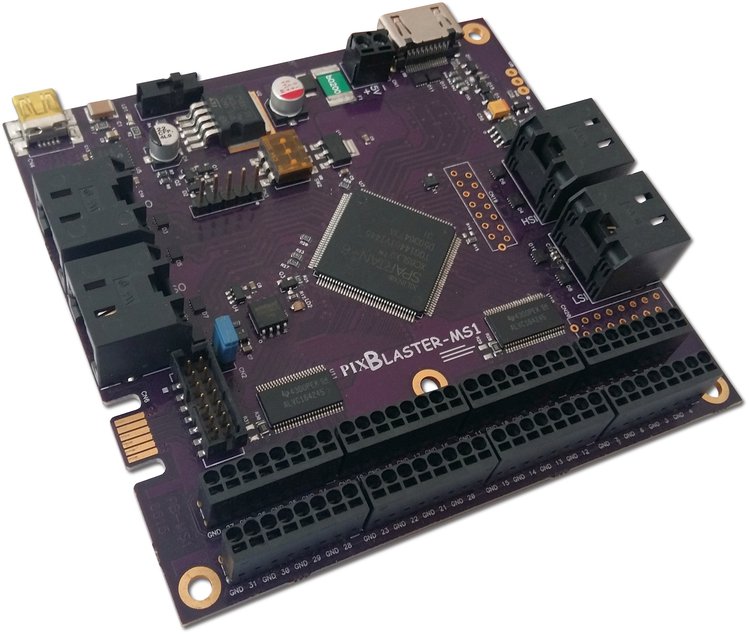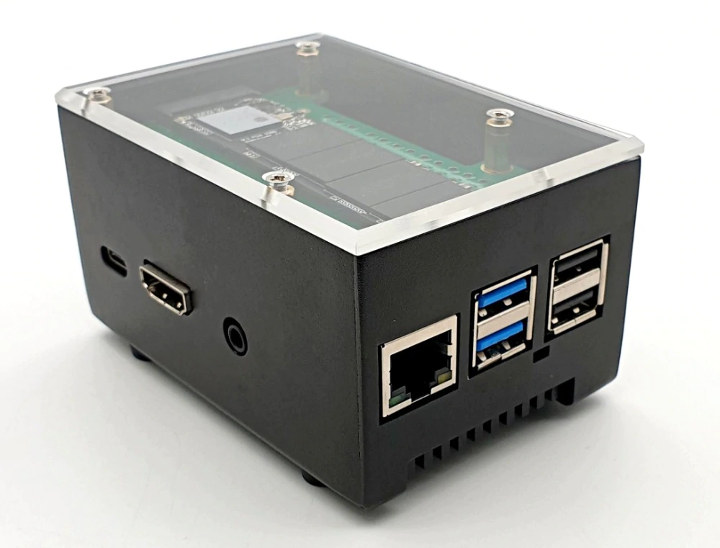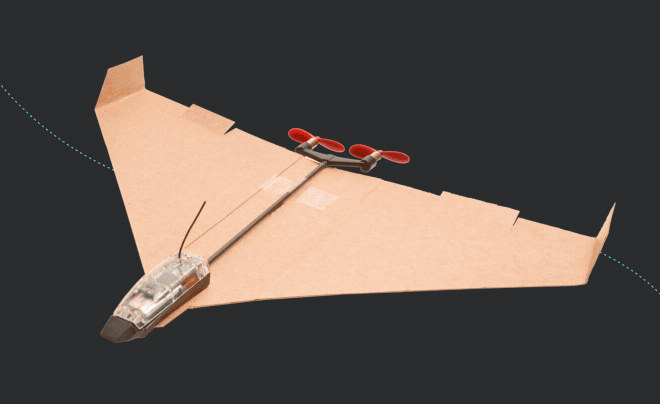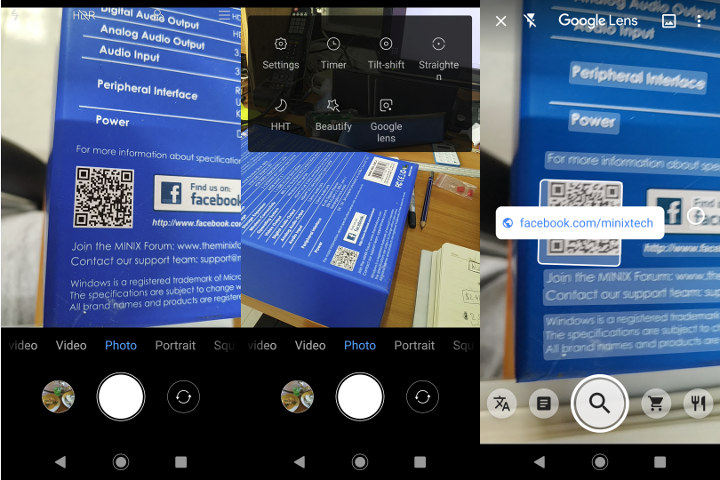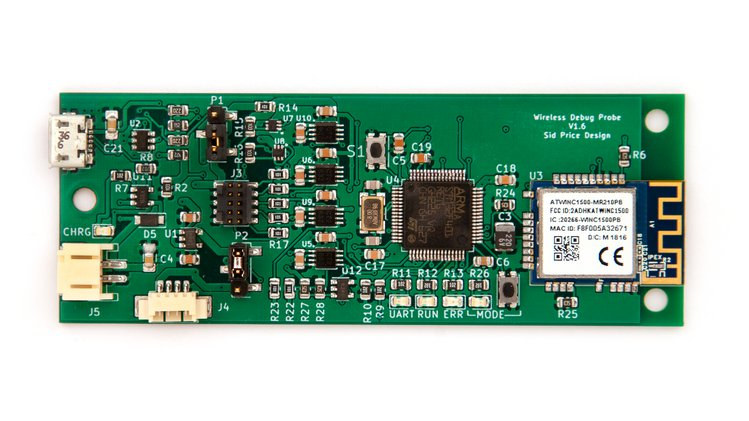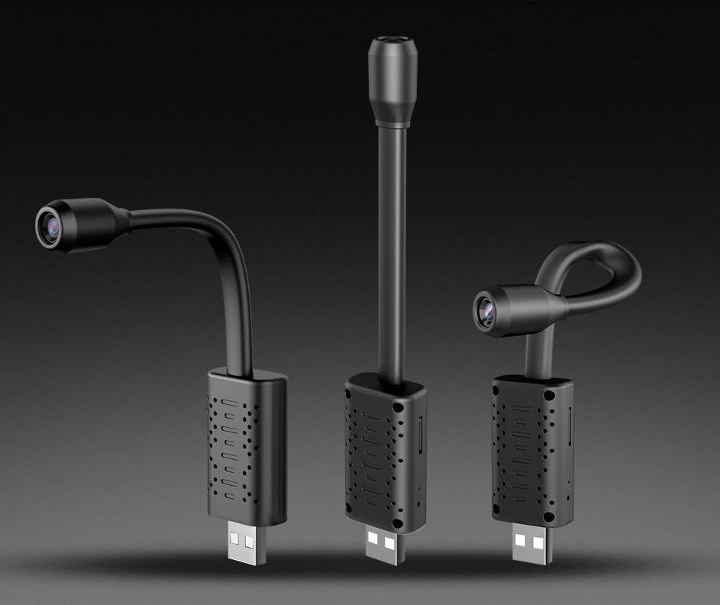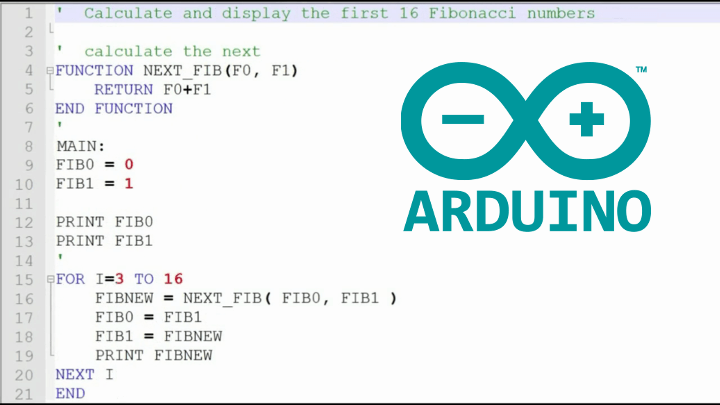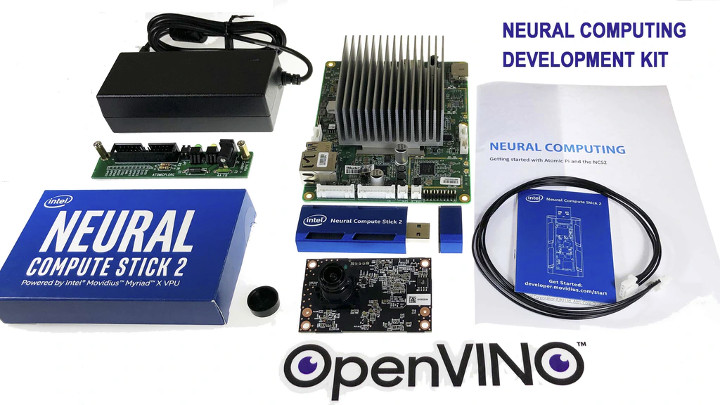Pixblaster Video LED Controller Pixblasters, a company focused on LED signage and video display, have started a Crowd Supply campaign for their MS1 Video Controller. The Pixblaster MS1 controller can be attached to any laptop or computer with HDMI output (think Raspberry Pi SBC) and control 16,384 LEDs without any programming, physical modifications or soldering. Extreme Scalability The market the MS1 video controller is aimed at is small business and makers, who hadn’t before had a controller with this much scalability. The company is saying that the MS1 can be daisy-chained together to control hundreds of thousands of LEDs and act as a full video monitor across hundreds of meters of LED strips. Programming The unit can easily and with little technical knowledge connect WS212B-Based addressable LED strips together for a complex output of digital displays, even mirroring a video display in some instances. Target Users The ability to use […]
ecoPI STARTER is a Cute Mini PC Kit Based on Rock Pi 4 SBC with Optional M.2 NVMe SSD
Rock Pi 4 is an affordable single board computer inspired by Raspberry Pi 3 Model B, but equipped with a more powerful Rockchip RK3399 hexa-core processor, and selling for around $80 with 4GB RAM, Gigabit Ethernet, and 802.11ac + Bluetotoh 5.0 wireless module. I’ve just come across ecoPI STARTER mini PC kit for the board with an aluminum case that can also fit an M.2 extension board to add an M.2 NVMe SSD card. The kit comes with an aluminum housing, an acrylic cover, some screws, bolts and silicon feet, and short ribbon cables for M.2 card. The acrylic cover is designed to let the WiFi & Bluetooth signal go through, but I’m not so confident the case won’t cause issue with WiFi. It’s currently sold for $16.50 on Aliexpress. You’ll also need to get Rock Pi 4A or 4B for $40 and up, M.2 Extension board ($8.39), heatsink ($8.39), […]
POWERUP 4.0 is a Smartphone Controlled Paper Plane with Autopilot (Crowdfunding)
A crowdfunding campaign about a paper plane… This can’t go very far, can it? Apparently, it can, because that’s Shai Goitein’s fourth POWERUP paper plane campaign, and PowerUp 3.0 raised over one million dollars a few years ago. POWERUP 4.0 is still a smartphone-controlled paper plane but this time it adds a few sensors, an autopilot, flight telemetry, and a night flight mode. More exactly that’s a kit for a paper plane, as you’d have to make your own and attach the kit to it. It’s powerful enough to support planes made of balsa wood, cardboard or foam board. They haven’t released the exact technical details of the kit but here are some of the key features: On-board flight control with autopilot that makes flying easier and allows you to make aerobatics manoeuvers such as loops or Twin motor + propellers allowing up to 10m/sec speed Connectivity – Bluetooth module […]
TIL: The Android Camera App Supports QR Code Scanning (in Some Phones)
QR Code are pretty common, and until today I used a third-party app to scan the codes and get the embedded information such as a webpage. But I’ve just read in LinkedIn that the default camera app can read QR codes. No need to install any third-party app, no need to reach any menu, just point for two or three seconds and it will work as shown in the short video below. I’m always running out of space on with Xiaomi Mi A2 phone since it only has 32GB flash, and no MicroSD card slot. So if beside saving some time while scanning QR code, I can get rid of one app that’s always a plus. Except it does not work on my phone. Instead I had to tap on the right of the camera app to switch to Google Lens (or launch Google Lens manually), and the QR […]
ctxLink Open Hardware WiFi Debug Probe is based Black Magic Probe (Crowdfunding)
Last month, we wrote about Blip nRF52840 dev board that also included an STM32F103 MCU running the open source Black Magic Probe (BMP) firmware for debugging and programming. Based on the original Black Magic Probe hardware product page, BMP is a JTAG and SWD adapter used for programming and debugging ARM Cortex MCUs, and does not require intermediate programs such as OpenOCD or STLink server. Instead, you can run GNU Debugger (GDB) and select the virtual COM port offered by the debug board. The reason I’m bringing BMP again today, is because a new open source hardware wireless debugging probe for Cortex-M based on Black Magic Probe has been launched in the last few days. ctxLink key features and specifications: Microcontroller – STMicro STM32F401RE Arm Cortex -M4F MCU at up to 84 MHz Connectivity – 802.11b/g/n WiFi via Microchip WINC1500 module USB – 1x micro USB port for connection to […]
Tiny USB WiFi Camera Supports Motion and AI Human Detection
When I first saw U21 HD camera it reminded me of SOOCOO G1 is action camera with a flexible stick, since the camera also comes with a flexible hose which allows you to orient it as you please. But it’s a different bear, as U21 is a surveillance camera powered over USB and featuring WiFi connectivity. I can’t see any motion detection, so it may have some dose of “AI” since it claims to support motion and human detection so you only get relevant alerts. It is currently sold (pre-orders) on Banggood for $33.65 including shipping with order starting to be processed on October 30th. U21 USB WIFI camera key features and specifications: MCU / WiSoC – No information (yet) Storage – MicroSD card slot up to 128GB for up to one month of recording (8GB = 2 days); Cloud storage via third party (paid) Camera – 14mm lens, HD […]
BASIC Compiler & Programming on Arduino Zero Boards (Crowdfunding)
Arduino boards are normally programmed using Arduino “programming language” that’s more like an API using C/C++ language. But when I started in high-school I remember learning Pascal and BASIC programming languages. Bruce Eisenhard also learned BASIC in the past, so he decided to port his company’s ARM BASIC compiler to Arduino Zero, and it should also work on other boards based on Microchip SAMD21G Arm Cortex-M0+ microcontroller. The compiler includes floating-point, strings, inline assembly, interrupts, pre-processor, and the BASIC firmware supports direct access to hardware registers so you can control digital and analog I/Os, ADCs, and other peripherals using BASIC programming language. A runtime monitor also facilitates debugging. The IDE used for development is called BASICtools that’s a free 30MB download which install programs and documentation. There are also libraries and examples from blinky to more complex code. It’s been possible to run interpreted BASIC on Arduino for a while, […]
Atomic Pi x86 SBC Meets Intel Neural Compute Stick 2 in $99 Neural Computing DevKit (Crowdfunding)
IoT Team launched the $34 Atomic Pi SBC powered by an Intel Atom x5-Z8350 processor via a Kickstarter campaign last December. At the time, it only ships to the US, and looked too good to be true. But the thing is real coming from a failed robotics project, and the low-cost x86 board went back for sale via Amazon and other channels with worldwide availability last spring. The price has even gone a bit lower as you’ll find it for $32.95 on Amazon. Note that it requires some technical skills to get started and with 16GB eMMC flash it only supports Liux distributions such as Ubuntu 18.04, and installing Windows 10 is possible, but you’ll be seriously limited. Atomic Pi is back in the news, as IoT Team has now launched another Kickstarter campaign for the board, except it’s not sold standalone, but instead as part of a $99 neural […]


